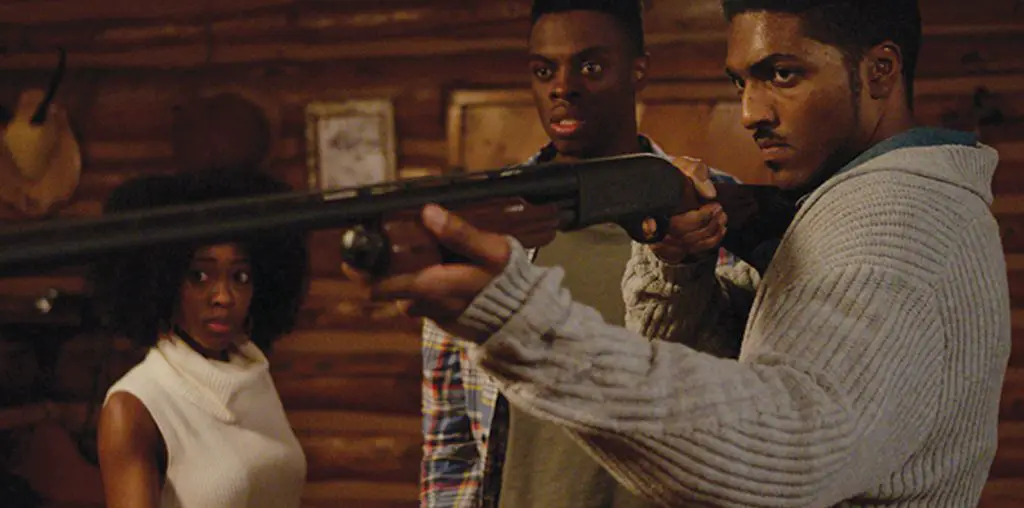
Who is Francis X. Bushman, and why did Lon Davis spend nearly 30 years writing a book about him?
First question answered: Francis X. Bushman (1883-1966) was a major star of the silent film era, and is best noted for his role as the evil Messala in the 1925 film version of “Ben-Hur.”
Second question: well, let’s have Davis talk about the story behind his new book King of the Movies: Francis X. Bushman. Davis, who co-wrote the book with his wife Debra, spoke with Film Threat from his home in Eugene, Oregon.
What inspired you to create a biography of Francis X. Bushman?
My interest in Francis X. Bushman dates back to 1972 when I was just thirteen years old. I had cultivated a friendship with retired actress Beverly Bayne; she was Bushman’s leading lady and his second wife. Beverly was in her late seventies when I met her, and she was an extremely charming lady – as long as she wasn’t talking about Bushman. She would rant and rave about what “a vain, egotistical monster” he had been. I listened with great interest, of course, and this led to my researching his life.
I was determined to form my own opinion of him, both as an actor and as a private person. What I found was a flawed but wonderfully colorful individual. He was also one of the most overlooked of the great silent stars.
By 1981, my fiancée, Debra LaCoe, had encouraged me to write Bushman’s biography, and we soon became co-authors. While researching the book, we made the acquaintance of Bushman’s widow, Iva, a former actors’ agent who lived in Pacific Palisades. Iva cherished her late husband’s memory with as much fervor as Beverly Bayne spent hating it. We slowly gained Iva’s trust, and after deeming us worthy, she handed over the keys to her garage, which contained all of Bushman’s memorabilia: unpublished notes and recordings for an unpublished autobiography; still pictures, letters, scripts, costumes – even his armor from “Ben-Hur.” You know that winged helmet he wore in the famous chariot race? We actually held that in our hands. That garage was an absolute mess, but what cinematic history it contained! We arranged to have some of its contents shipped to the Smithsonian Institution in Washington, D.C.
As for our manuscript, it was completed in 1983, but no publisher would touch it. Thanks to the ever-adventurous BearManor Media, it’s finally available – nearly 30 years after we started working on it!
For those unfamiliar with Bushman, which films represent the best of his career?
Well, “Ben-Hur,” naturally. It is, in fact, the only widely available, widely shown film of his from the silent era – but what a film to be remembered for! Bushman sometimes lamented the fact that no one ever talked about his hundreds of other silent films, but sadly, most of them were lost due to time, studio fires, and nitrate decomposition.
The best films he made during his peak years of popularity were “Dear Old Girl” (Essanay, 1913), “Graustark” (Essanay, 1915), “Pennington’s Choice” (Metro, 1915), and “Romeo and Juliet” (Metro, 1916). We actually viewed a 35mm print of “Pennington’s Choice” in a screening room on the MGM lot in 1982. It was a very entertaining romantic comedy. I hope that it turns up on Turner Classic Movies someday.
I truly believe Bushman is due for a renaissance. Until more of his silent films come to light, however, he is probably best known by fans of cult movies for his role as Sessom, the leader of the planet Rehton, in the incredibly low-budget science fiction melodrama, “The Phantom Planet” (1961, also an MST3K episode). It’s just a couple of notches above “Plan 9 From Outer Space.” You can find that on DVD in the dollar bins in most video stores.
Why did Bushman’s career falter in the period between the end of silent movies and the beginning of talkies?
To hear Bushman tell it, it was because he made a powerful enemy out of Louis B. Mayer. In 1917, Bushman starred in Mayer’s first production, “The Great Secret,” a serial that was something of a flop. When he was making “Ben-Hur” in the mid-twenties for the newly formed Metro-Goldwyn-Mayer company, Bushman alienated Mayer by holding him up for more money when the production was stalled.
It is true that Mayer hated Bushman and threatened him with career ruin for his disrespectful attitude. Bushman said that after his comeback in “Ben-Hur,” he “couldn’t get arrested in Hollywood,” and he immediately surmised that old Louis had blacklisted him. He did manage to land some starring roles for Universal and a few independents, but continued to slip by the end of the twenties.
Unlike the fate of some silent stars, it wasn’t Bushman’s voice that kept him out of the public eye when talkies came in. He actually made a living with his voice, appearing regularly on radio during the thirties and forties. More than anything, Deb and I believe, Bushman represented a bygone era and held onto an outmoded style of acting. This kept his parts small and rather undistinguished for the remainder of his career.
What did Bushman think of the 1959 remake of his classic, “Ben-Hur”? And how did he view Stephen Boyd’s performance in the role he played (Messala)?
Bushman went on record as saying that he loved the remake, and even appeared with his former “Ben-Hur” co-star, Ramon Novarro, to promote the film. Privately, he expressed a bit of jealousy that the current version had every benefit of film’s advanced technology.
One thing he genuinely appreciated was the humane manner in which the horses on the set were treated. He claimed that any time a horse on the 1925 production so much as limped, it was shot. Conversely, he said, not a horse was killed on the 1959 version.
Iva told us that she and Francis met with Stephen Boyd when he was cast in the remake, and he admitted frankly to them that he did not feel he was up to the role of the mighty Roman, Messala. Despite the fact that he was in his seventies at the time, Bushman would probably have loved playing Messala all over again. He took great pride in his chariot-driving skills.
What are your next projects?
I am currently at work on a number of book projects, but as an editor, not as an author. One is the autobiography of Lupita Tovar, one of the last surviving silent film actresses. She was also the female lead in the Spanish-language version of “Dracula” in 1931. I’m also following up my work on “Stooges Among Us” by editing Bill Cassara’s biography of Vernon Dent. And I’m editing Larry Telles’s biography of silent serial queen Helen Gibson. In the past couple of years, I have completed more than forty books on everything from theater to movies to television to radio.
I’m pleased to say that all of those years holed up in my bedroom studying vintage entertainment are finally paying off!

